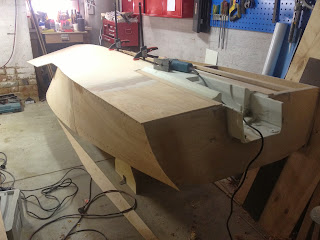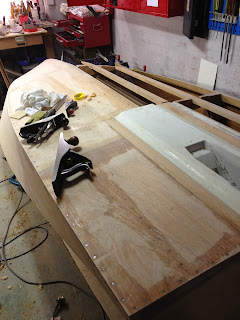After taking a month off I've picked up the tools again and started by making some templates up to transfer onto the plywood.
Although the template is to size, I cut the plywood over size by 10mm along the chine and ensured I had a straight edge forward of frame#2, the ply was dry fitted numerous times with a little fairing needed here and there ensuring it was a neat fit.
All holes are pre-drilled and counter sunk, I also gave the inside of the panel a coat of Epoxy prior to fitting.
Taking about 1hr20min to fit 1 side (by myself) and with the resin curing, I found it a lot easier on the other side if I pre-screwed the screws in the holes before applying the epoxy, this saved me a good 30min
The bottom side has been cut down to 10mm over and I now have to cut out a section for the JSki hull and try and get a flat, even transition

























